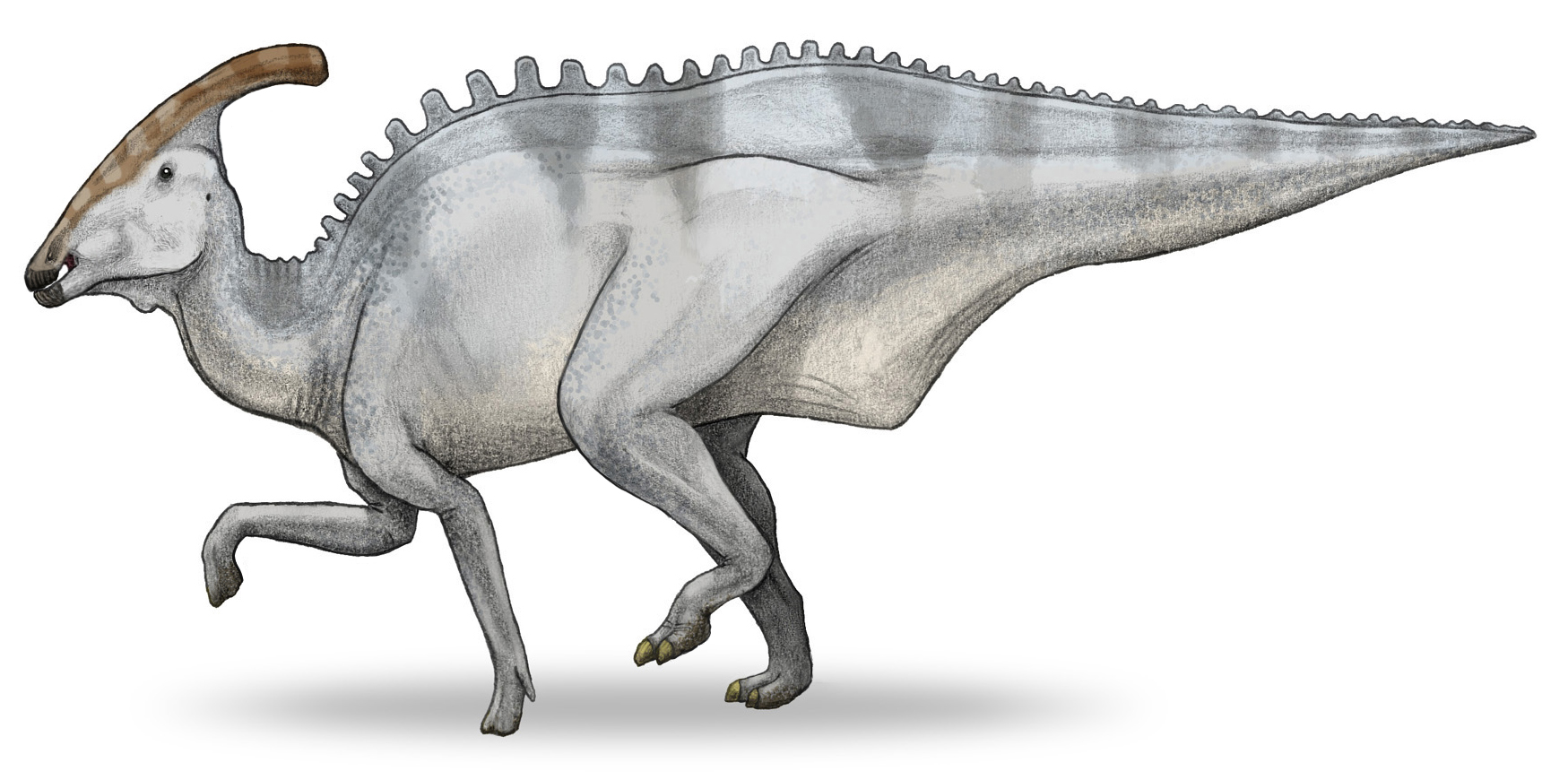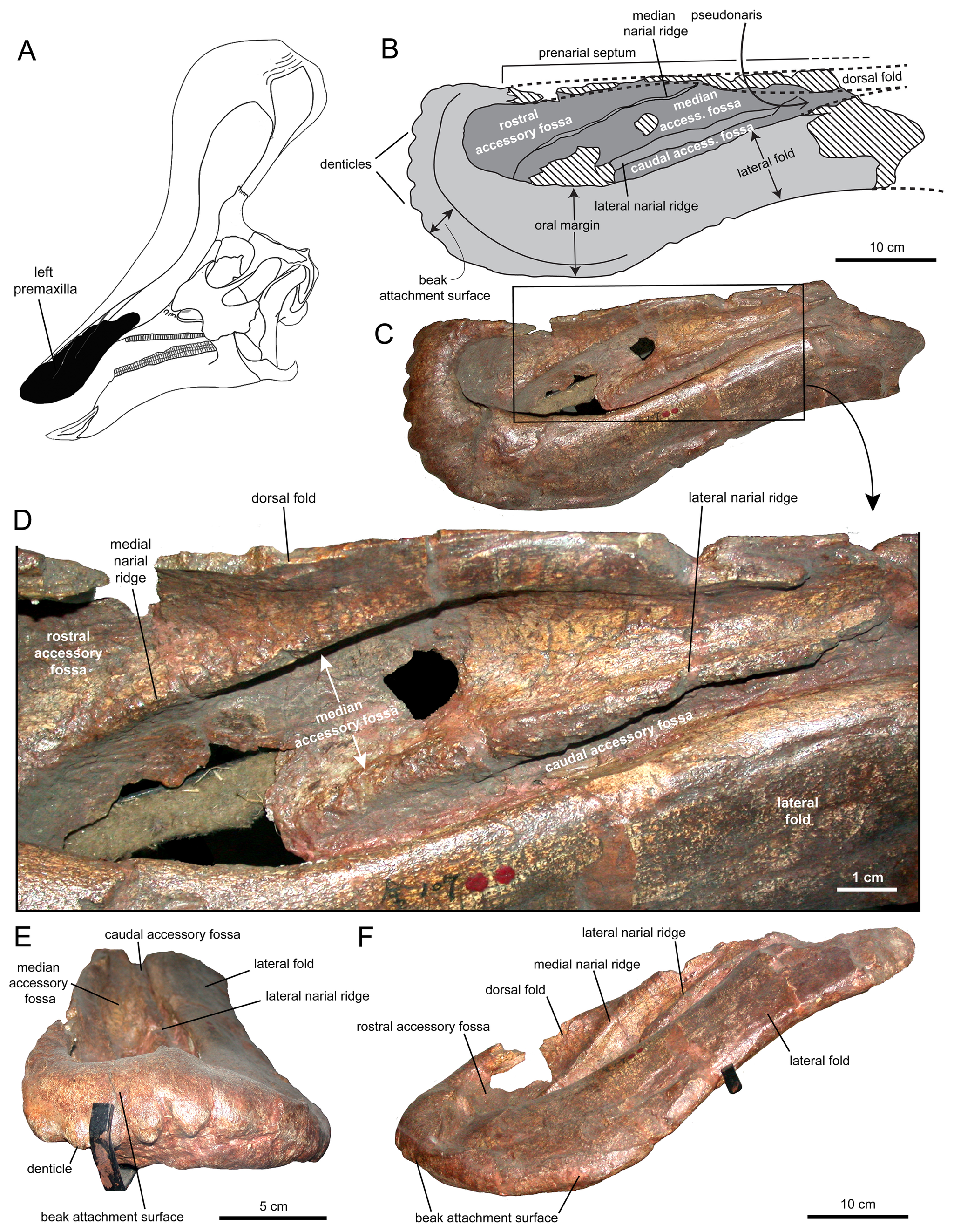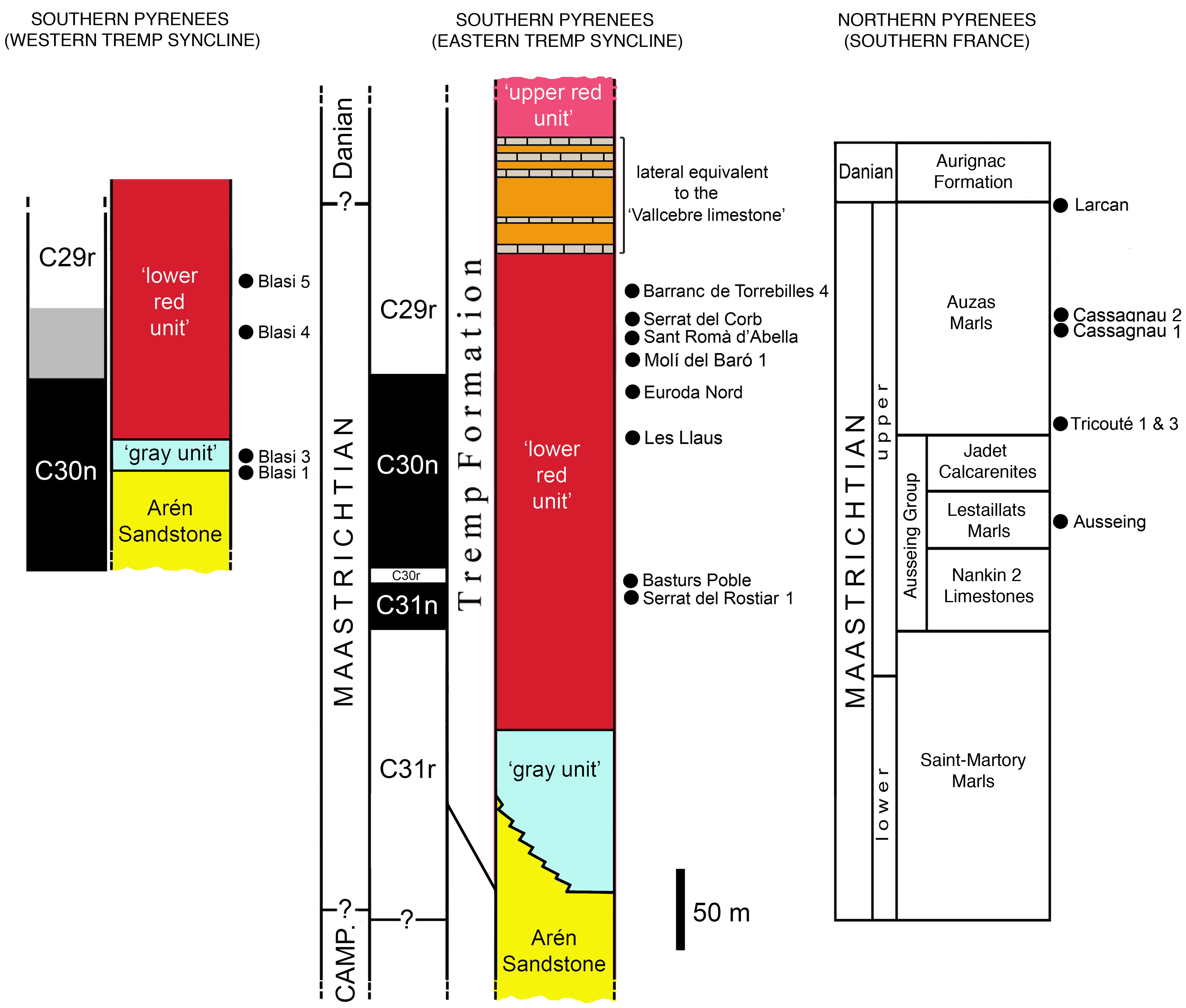|
Charonosaurus Jiayinensis
''Charonosaurus'' ( ; meaning "Charon's lizard") is a genus of dinosaur whose fossils were discovered by Godefroit, Zan & Jin in 2000 on the south bank of the Amur River, dividing China from Russia. It is monotypic, consisting of the species ''C. jiayinensis''. Description ''Charonosaurus'' is a very large lambeosaurine hadrosaur, estimated around in length and in body mass.Holtz, Thomas R. Jr. (2012) ''Dinosaurs: The Most Complete, Up-to-Date Encyclopedia for Dinosaur Lovers of All Ages,'Winter 2011 Appendix./ref> It is known from a partial skull (Holotype: CUST J-V1251-57 (Changchun University of Sciences and Technology, Changchun, Jilin Province, China) found in the Late Maastrichtian Yuliangze Formation, west of Jiayin village, Heilongjiang Province, northeastern China. Adult and juvenile hadrosaur remains discovered in the same area and formation likely represent the same taxon and supply information on most of the postcranial skeleton; the femur length was up to 1.35 ... [...More Info...] [...Related Items...] OR: [Wikipedia] [Google] [Baidu] |
Late Cretaceous
The Late Cretaceous (100.5–66 Ma) is the younger of two epochs into which the Cretaceous Period is divided in the geologic time scale. Rock strata from this epoch form the Upper Cretaceous Series. The Cretaceous is named after ''creta'', the Latin word for the white limestone known as chalk. The chalk of northern France and the white cliffs of south-eastern England date from the Cretaceous Period. Climate During the Late Cretaceous, the climate was warmer than present, although throughout the period a cooling trend is evident. The tropics became restricted to equatorial regions and northern latitudes experienced markedly more seasonal climatic conditions. Geography Due to plate tectonics, the Americas were gradually moving westward, causing the Atlantic Ocean to expand. The Western Interior Seaway divided North America into eastern and western halves; Appalachia and Laramidia. India maintained a northward course towards Asia. In the Southern Hemisphere, Australia a ... [...More Info...] [...Related Items...] OR: [Wikipedia] [Google] [Baidu] |
Charon
In Greek mythology, Charon or Kharon (; grc, Χάρων) is a psychopomp, the ferryman of Hades, the Greek underworld. He carries the souls of those who have been given funeral rites across the rivers Acheron and Styx, which separate the worlds of the living and the dead. Archaeology confirms that, in some burials, low-value coins were placed in, on, or near the mouth of the deceased, or next to the cremation urn containing their ashes. This has been taken to confirm that at least some aspects of Charon's mytheme are reflected in some Greek and Roman funeral practices, or else the coins function as a viaticum for the soul's journey. In Virgil's epic poem, ''Aeneid'', the dead who could not pay the fee, and those who had received no funeral rites, had to wander the near shores of the Styx for one hundred years before they were allowed to cross the river. Some mortals, heroes, and demigods were said to have descended to the underworld and returned from it as living beings. T ... [...More Info...] [...Related Items...] OR: [Wikipedia] [Google] [Baidu] |
Lambeosaurus
''Lambeosaurus'' ( , meaning " Lambe's lizard") is a genus of hadrosaurid dinosaur that lived about 75 million years ago, in the Late Cretaceous period (Campanian stage) of North America. This bipedal/quadrupedal, herbivorous dinosaur is known for its distinctive hollow cranial crest, which in the best-known species resembled a mitten. Several possible species have been named, from Canada, the United States, and Mexico, but only the two Canadian species are currently recognized as valid. Material relevant to the genus was first named by Lawrence Lambe in 1902. Over twenty years later, the modern name was coined in 1923 by William Parks, in honour of Lambe, based on better preserved specimens. The genus has a complicated taxonomic history, in part because small-bodied crested hadrosaurids now recognized as juveniles were once thought to belong to their own genera and species. Currently, the various skulls assigned to the type species ''L. lambei'' are interpreted as showing ... [...More Info...] [...Related Items...] OR: [Wikipedia] [Google] [Baidu] |
Lambeosaurini
Lambeosaurini, previously known as Corythosaurini, is one of four tribes of hadrosaurid ornithopods from the family Lambeosaurinae. It is defined as all lambeosaurines closer to ''Lambeosaurus lambei'' than to ''Parasaurolophus walkeri, Tsintaosaurus spinorhinus, or Aralosaurus tuberiferus'', which define the other three tribes. Members of this tribe possess a distinctive protruding cranial crest. Lambeosaurins walked the earth for a period of around 12 million years in the Late Cretaceous, though they were confined to regions of modern-day North America and Asia. History of classification The term Corythosaurini was first used by Brett-Surman in 1989, who characterized the taxon via reference to the premaxilary expansion into a hollow helmet-like cranial crest, as well as higher neural spines. The clade was formally defined via phylogenetic analysis by Evans and Reisz in 2007, and this was confirmed by multiple other analyses. In 2011, Sullivan ''et al.'' observed that by the ... [...More Info...] [...Related Items...] OR: [Wikipedia] [Google] [Baidu] |
Arenysaurus
''Arenysaurus'' is a genus of hadrosaurid dinosaur from the Late Cretaceous (66 million years ago), being one of the last non-avian dinosaurs and it went extinct during the Cretaceous–Paleogene extinction event. It is known from a partial skull and skeleton found in the late Maastrichtian-age Tremp Formation of the Pyrenees Mountains in Spain. The type species is ''A. ardevoli'', described in 2009 by Pereda-Suberbiola ''et al.'', a group of researchers from Spain. The genus name refers to Arén, where it was found, and the specific epithet honours geologist Lluís Ardèvol. ''Arenysaurus'' was a lambeosaurine, a member of the hadrosaurid subfamily with hollow and decorative cranial crests. It is one of the most complete and best dated ever found in the Late Cretaceous period. Description ''Arenysaurus'' was a medium-sized hadrosaur, measuring long and weighing . Its fossils were found in a small village (350 inhabitants) in the Aragonese Pyrenees called Arén (Areny in ... [...More Info...] [...Related Items...] OR: [Wikipedia] [Google] [Baidu] |
Blasisaurus Canudoi
''Blasisaurus'' is a genus of lambeosaurine hadrosaurid dinosaur from the Late Cretaceous. It is known from a partial skull and skeleton found in late Maastrichtian-age rocks of Spain. The type species is ''Blasisaurus canudoi'', described in 2010 by Penélope Cruzado-Caballero, Xabier Pereda-Suberbiola and José Ignacio Ruiz-Omeñaca, a group of researchers from Spain. Naming and discovery The generic name refers to the ''Blasi 1'' site where the fossil was found. The specific epithet honours paleontologist José Ignacio Canudo. The holotype, MPZ99/667, is housed in Huesca. It was found in a layer of the Arén Formation dating from the upper Maastrichtian, about 66 million years ago. It consists of a skull with fragmentary lower jaws. Description ''Blasisaurus'' was a medium-sized ornithopod. Its describers identified two distinct features: the cheekbone has a rear projection with a hook-shaped upper edge and the lower sleep window is narrow and D-shaped. From the same forma ... [...More Info...] [...Related Items...] OR: [Wikipedia] [Google] [Baidu] |
Parasaurolophini
Parasaurolophini is a tribe of derived corythosaurian lambeosaurine hadrosaurids that are native to Asia, and North America. It is defined as everything closer to ''Parasaurolophus walkeri'' than to ''Lambeosaurus lambei''. It currently contains ''Adelolophus'' (from Utah), possibly ''Angulomastacator'' (from Texas), '' Charonosaurus'' (from China), ''Parasaurolophus'' (from Utah, New Mexico, China and Alberta) and '' Tlatolophus'' (from Mexico). See also * Timeline of hadrosaur research A timeline is a display of a list of events in chronological order. It is typically a graphic design showing a long bar labelled with dates paralleling it, and usually contemporaneous events. Timelines can use any suitable scale representi ... References Lambeosaurines {{ornithopod-stub ... [...More Info...] [...Related Items...] OR: [Wikipedia] [Google] [Baidu] |
Sahaliyania
''Sahaliyania'' (from "black" in Manchu, a reference to the Amur/Heilongjiang River) is a genus of lambeosaurine hadrosaurid dinosaur (crested duckbilled dinosaur) from the Late Cretaceous of Heilongjiang, China. Discovery Its remains were found in a bonebed in the Maastrichtian-age Yuliangze Formation, alongside rarer remains of the hadrosaurine hadrosaurid (flat-headed duckbill) ''Wulagasaurus''. ''Sahaliyania'' was named by Pascal Godefroit and colleagues in 2008. It is one of several hadrosaurids from the Amur River region named since 2000. The type and only species to date is ''S. elunchunorum'', named in honor of the Elunchun people. ''Sahaliyania'' is based on GMH W453, a partial skull. Godefroit and colleagues assigned numerous other fossils from the bonebed to their new genus, representing much of the skull, pectoral girdle, upper arm, and pelvis. It can be distinguished from other hadrosaurids by a variety of anatomical details. Godefroit and colleagues per ... [...More Info...] [...Related Items...] OR: [Wikipedia] [Google] [Baidu] |
Amurosaurus
''Amurosaurus'' (; "Amur lizard") is a genus of lambeosaurine hadrosaurid dinosaur found in the latest Cretaceous period (66 million years ago)Godefroit, P., Lauters, P., Van Itterbeeck, J., Bolotsky, Y. and Bolotsky, I.Y. (2011). "Recent advances on study of hadrosaurid dinosaurs in Heilongjiang (Amur) River area between China and Russia." ''Global Geology'', 2011(3). of eastern Asia. Fossil bones of adults are rare, but an adult would most likely have been at least long. According to Gregory S. Paul, it was about long and weighed about . Discovery and naming Russian paleontologists Yuri Bolotsky and Sergei Kurzanov first described and named this dinosaur in 1991. The generic name is derived from the Amur River and the Greek word ''sauros'' ("lizard"). The Amur (called Heilongjiang or "Black Dragon River" in Chinese) forms the border of Russia and China, and is near where this dinosaur's remains were found. There is one known species (''A. riabinini''), named in honor of ... [...More Info...] [...Related Items...] OR: [Wikipedia] [Google] [Baidu] |
Jaxartosaurus
''Jaxartosaurus'' (meaning "Jaxartes lizard" after the early name of the Syr Darya) is a genus of hadrosaurid dinosaur similar to ''Corythosaurus'' which lived during the Late Cretaceous. Its fossils were found in Kazakhstan. Description ''Jaxartosaurus'' had a large crest that it may have used for visual identification, or to vocalize with members of the same species, as inferred for other lambeosaurines. They were likely herbivores, grazing on low-lying plants. Taxonomy The type species, ''J. aralensis'', was first described by Anatoly Riabinin in 1937.Riabinin, A.M. (1937). "A New Finding of Dinosaurs in the Trans-Baikal Region". Ezhegodn. Vserossijskogo Palaeont. Obstcg. 11: 142–144 A second species, ''J. fuyunensis'', was described by Wu (1984) for a dentary from Xinjiang, China, but is dubious.Weishampel, D. B. & Horner, J. R. 1990. Hadrosauridae. In: Weishampel, D. B. et al. (eds.). The Dinosauria. Univ. Calif. Press, Berkeley. pp. 534-561. See also * Timeline of ... [...More Info...] [...Related Items...] OR: [Wikipedia] [Google] [Baidu] |
Tsintaosaurus
''Tsintaosaurus'' (; meaning " Qingdao lizard", after the old transliteration "Tsingtao") is a genus of hadrosaurid dinosaur from China. It was about long and weighed . The type species is ''Tsintaosaurus spinorhinus'', first described by Chinese paleontologist C. C. Young in 1958. A hadrosaur, ''Tsintaosaurus'' had a characteristic 'duck bill' snout and a battery of powerful teeth which it used to chew vegetation. It usually walked on all fours, but could rear up on its hind legs to scout for predators and flee when it spotted one. Like other hadrosaurs, ''Tsintaosaurus'' probably lived in herds. Discovery and naming In 1950, at Hsikou, near Chingkangkou, in Laiyang, Shandong, in the eastern part of China, various remains of large hadrosaurids were uncovered. In 1958 these were described by Chinese paleontologist Yang Zhongjian ("C.C. Young") as the type species ''Tsintaosaurus spinorhinus''. The generic name is derived from the city of Qingdao, earlier often trans ... [...More Info...] [...Related Items...] OR: [Wikipedia] [Google] [Baidu] |
Pararhabdodon
''Pararhabdodon'' (meaning "near fluted tooth" in reference to '' Rhabdodon'') is a genus of tsintaosaurin hadrosaurid dinosaur, from the Maastrichtian-age Upper Cretaceous Tremp Group of Spain. The first remains were discovered from the Sant Romà d’Abella fossil locality and assigned to the genus ''Rhabdodon'', and later named as the distinct species ''Pararhabdodon isonensis'' in 1993. Known material includes assorted postcranial remains, mostly vertebrae, as well as from the skull. Specimens from other sites, including remains from France, a maxilla previously considered the distinct taxon '' Koutalisaurus kohlerorum'', an additional maxilla from another locality, the material assigned to the genera '' Blasisaurus'' and '' Arenysaurus'', and the extensive Basturs Poble bonebed have been considered at different times to belong to the species, but all of these assignments have more recently been questioned. It was one of the last non-avian dinosaurs known from the fossil re ... [...More Info...] [...Related Items...] OR: [Wikipedia] [Google] [Baidu] |







